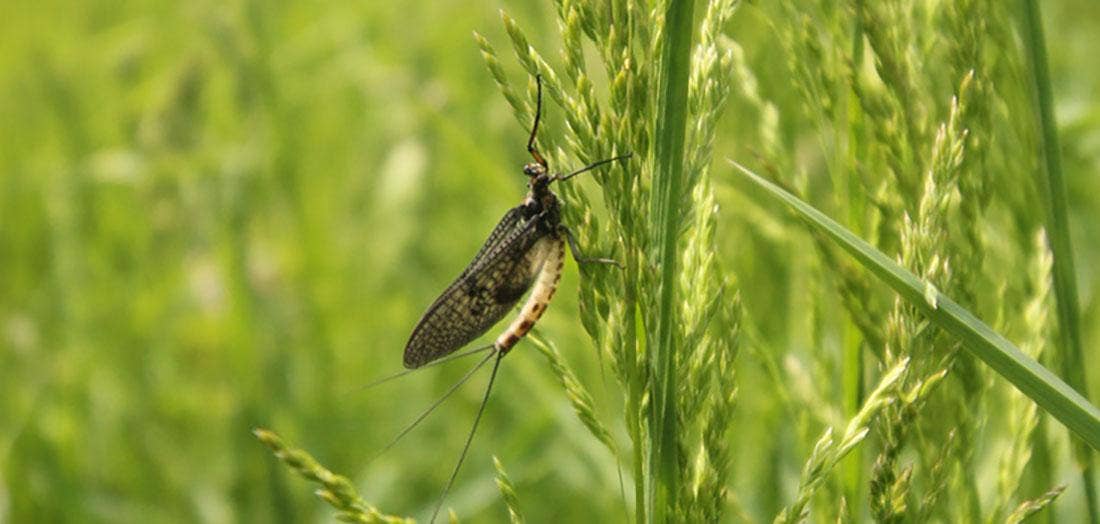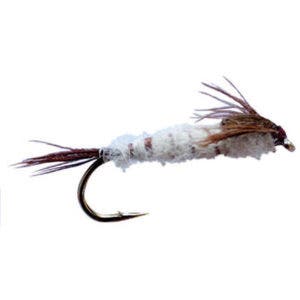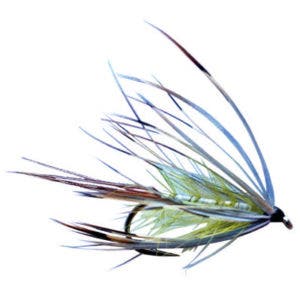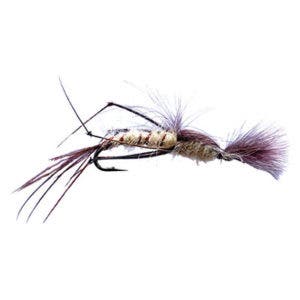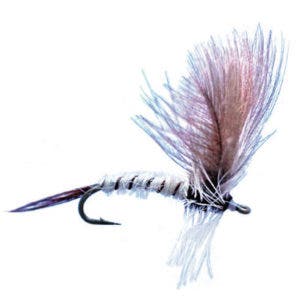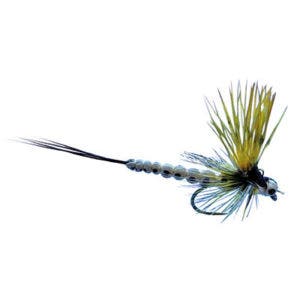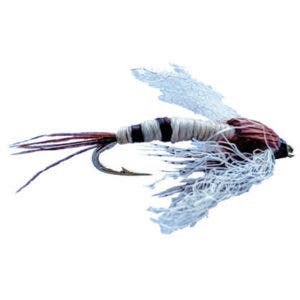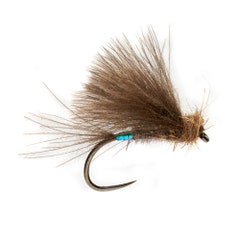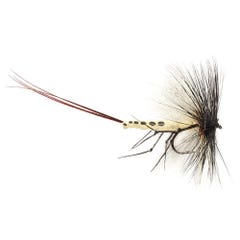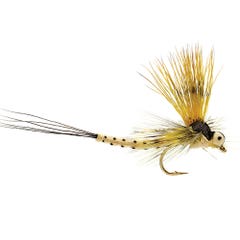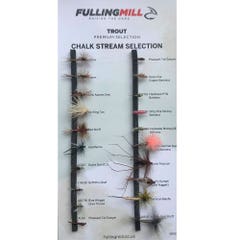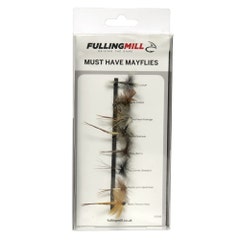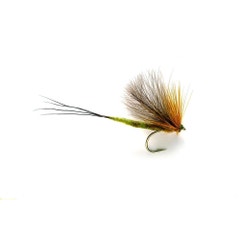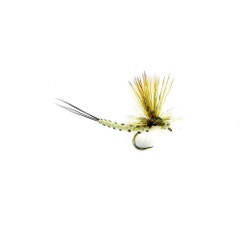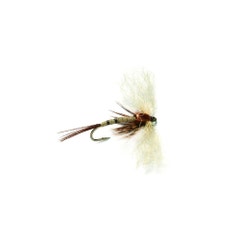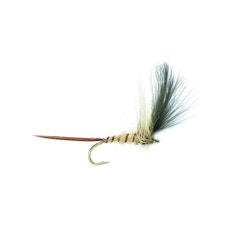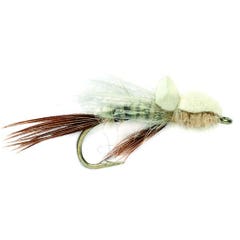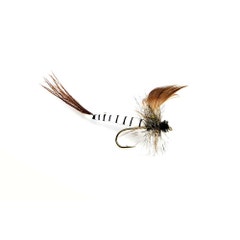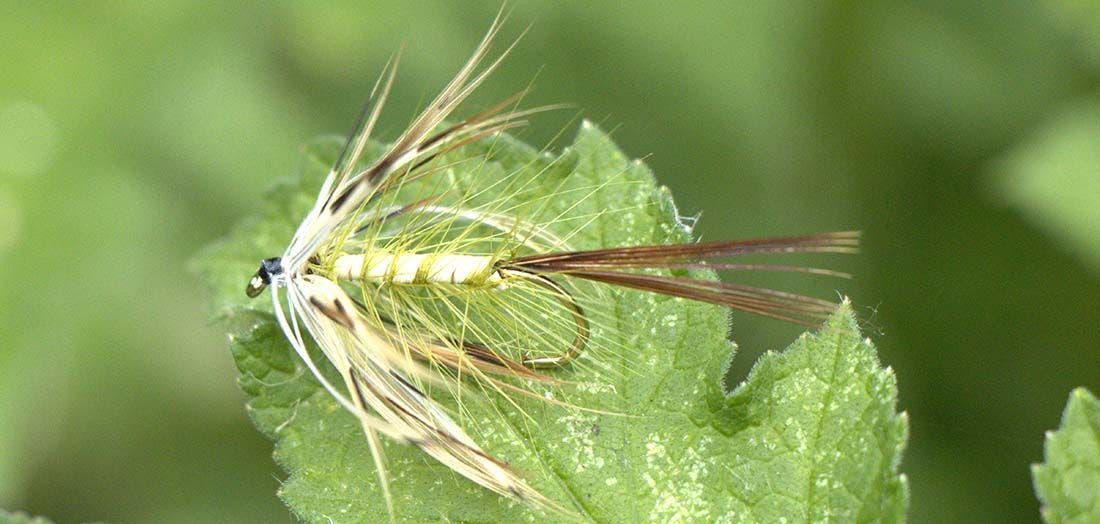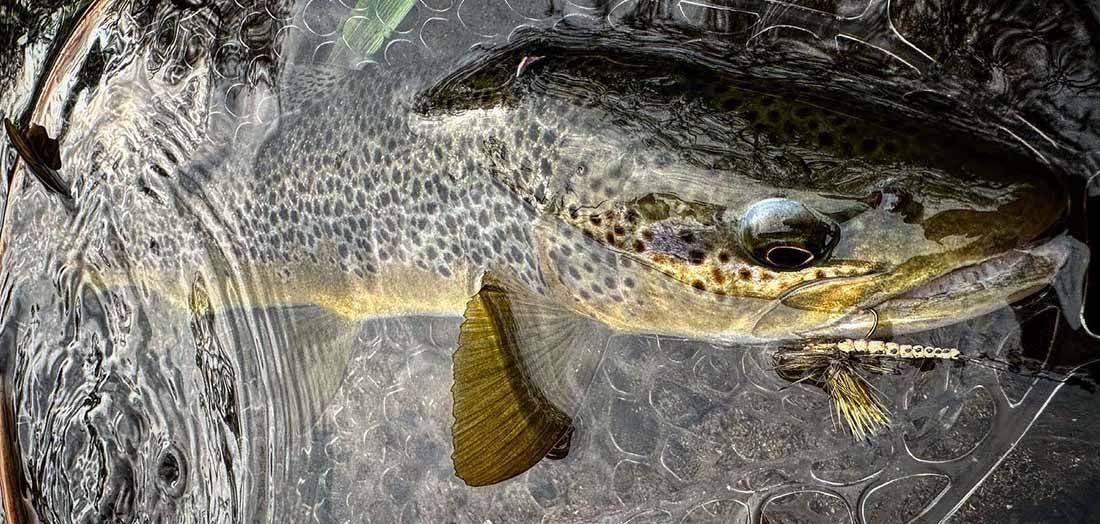Walker's Mayfly Nymph
A classic pattern that is a very effective trout-catcher. Fish them upstream dead-drifted but, if rules allow, let them swing and use long, smooth pulls to bring them to life.
You can even fish them New Zealand-style under a large, buoyant dry fly. Overall, think induced take, lifting the nymph from the riverbed in an enticing fashion several times during the drift.
The French Partridge Mayfly
This is a generic pattern that can imitate multiple mayfly life stages, but it is particularly suited to use as an emerger.
Apply just enough floatant, such as Gink, by liquifying the gel between your fingers and aim to present the fly suspended in the surface film, allowing the soft fibres to twitch naturally in the current as you dead-drift it back downstream - deadly!
Fulling Mill Crippled Mayfly
Knotted legs and shuttlecock-style Cul de Canard (CDC) are incorporated into this fly and the fibres keep the front of the fly just above the surface, while the rear of the fly and its legs dangle enticingly below.
This is a brilliant pattern to imitate those stillborn mayflies that have spent two years below only to become trapped at the surface, an easy meal which is usually confidently taken.
Baz's Mayfly
A dun imitation pattern that you simply must have in your box! Grey CDC wings add plenty of buoyancy, while also mimicking the dun’s opaque wing colour. The body is tied along the hook with strong markings to replicate the segmented abdomen offering superb trigger points.
Experiment with a little floatant to get this fly sitting right in the surface film.
Oliver Edwards Mohican May
This is a large, realistic pattern but trout can become spooky around very big flies, so fish it naturally. Don’t be tempted to cast straight at a fish, instead, give the fish some lead presenting several feet above the lie, with no drag, and be ready for a slow, purposeful take.
With so much food around during a large hatch trout can become lazy, lift too soon and the chance will be gone.
Spent Spinner
A simple pattern with outstretched wings that imitates the post-egg laying mayflies as they float downstream at the mercy of the current. Observe the water, see how the naturals are behaving during their final moments of life and try to mimic this with your artificial.
A degreased leader, correctly floated fly and a lifelike presentation will help you catch more than the 'duffers', especially towards the end of the hatch when the fish have seen it all.


